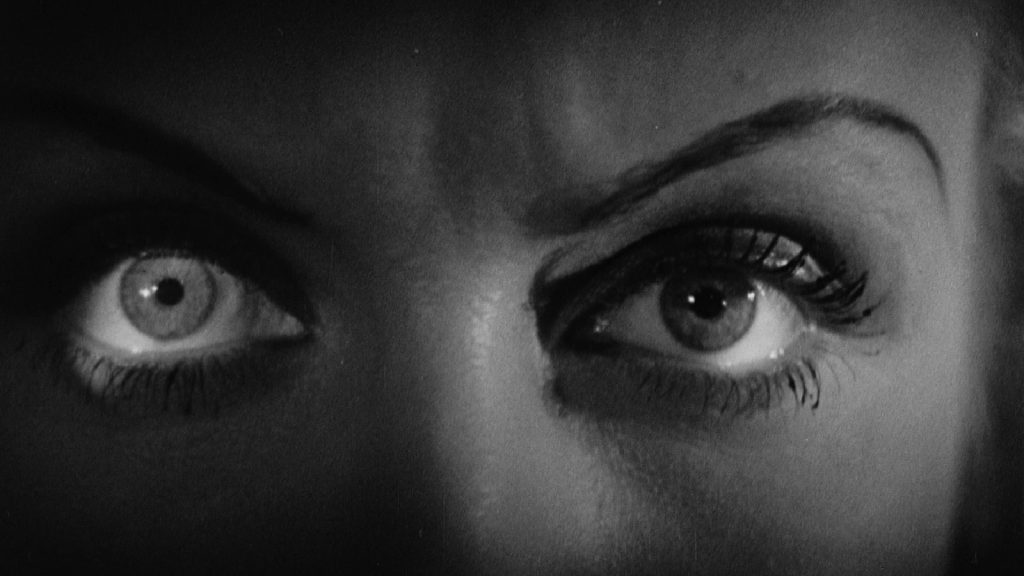
Set in the mist-shrouded woods of Upper Austria in the 18th century, the latest film from writer/director duo Veronika Franz and Severin Fiala opens with a prelude depicting a crime and its subsequent, swift punishment: a woman tosses a baby down a deep, jagged waterfall before calmly turning herself in to the authorities, who fatally dismember the woman and later display her remains in a sort of forest shrine. The impact of this prelude is enhanced by the beguiling starkness of Franz and Fiala’s considerable craft and distinctly bleak sensibility, which is at once brutal and restrained, as well as their confidence in the unnerving resonance of their material, which is drawn, with seemingly minimal embellishment, from historical records. As this artful horror film proceeds at its measured pace toward a full-circle conclusion, we may find ourselves waiting for some supernatural element to help explain the chilling behavior on display. But to work literal demons into The Devil’s Bath, to place onus on any force other than human volition and collective agreement, would almost feel like consolation—and consolation has no place in Franz and Fiala’s cinema of entropy. Rather, we are ushered into a milieu in which Catholicism, paganism, and patriarchy intersect, and what resembles sadistic bloodshed is the product of a shared, pious logic.
At the heart of The Devil’s Bath is Agnes (Anja Plaschg), who migrates to a neighboring village to marry Wolf (David Scheid), a cheerful young man who, like most of his peers, works as a fisherman, trawling the muddy river around which their village is situated. In this God-fearing, repressed, highly superstitious community, Agnes stands out as a bit of a dreamer, alert to sources of ordinary wonder others take for granted, marveling at the glistening of fish scales or the way the wind sings through the trees. Wolf seems genuinely charmed by his new wife, but Wolf’s mother (Maria Hofstätter) judges Agnes’s eccentricities harshly and expects her to produce offspring promptly, unaware that her son is, let’s say, failing to perform his part in the reproductive process. Agnes is earnest in her desire to bear children and collects a series of talismans—including one of the severed digits of the murderess from the film’s prelude—which she tucks under her mattress as a way to petition spiritual assistance for her fertility. In careful increments, Franz and Fiala reveal how the community’s strict religious beliefs and Agnes’s growing psychic instability collude, together forging a path that leads to inevitable doom.

The towering trees, the mossy forest floor, the newly caught catfish gasping in their death throes, the low-ceilinged houses with their gloomy, firelit rooms: The Devil’s Bath possesses a strong sense of place, its light, its textures, and its innate rhythms. It would be easy to sensationalize Agnes’s story, to impose a hoary ambiance over the proceedings, but as with Franz and Fiala’s narrative feature debut, Goodnight Mommy (2014), the aesthetic choices on display are uniformly grounded in setting. Cinematographer Martin Gschlacht won the Silver Bear for Outstanding Artistic Contribution at this year’s Berlinale, no doubt in part because the evocation of time and place is so utterly unified with the film’s themes and narrative thread. Likewise, the performances seem summoned from the soil and sanctimoniousness of the setting, most especially that of Plaschg, who finds remarkable ways of making Agnes’s internal struggles legible. Plaschg also makes experimental music as Soap&Skin and created the music for The Devil’s Bath, which at times incorporates electronics into a largely acoustic score whose most emblematic motif is a lengthy draw upon a violin—a guttural sound that mirrors the protagonist’s harrowing descent into a fate that seems to have been waiting for her all along.

is a freelance critic and playwright.
Clocking in at a swift 87 minutes, Andrew Cumming’s feature debut is a slick, beautiful genre piece best suited for the big screen. Partially reminiscent of Jean-Jacques Annaud’s...
BY MARGARET BARTON-FUMO | February 9, 2024
Now that the fear economy is booming, you may be kicking yourself for investing everything in love. But before you dump all those stocks, ask yourself the perennial question: would you rather be loved or feared?
BY TOM PHELAN | November 12, 2024
From its opening image of ocean waves stuttering slowly behind a sheet of steely rain to its final vista of human detritus turned into cosmic junk...
BY JOSÉ TEODORO | December 9, 2022

This pre-Code offering packs a lot of story into its typically brisk running time, with several plot threads weaving together a (not always successful) tapestry of spooky and criminal doings.
READ MORE >
BY ANN OLSSON | Month 00, 2021

In what could be the fastest-resulting rape revenge movie, a drunken lout brutally forces himself on Ida, the young woman who doesn't return his affections, during a party over Labor Day.
READ MORE >
BY LAURA KERN | Month 00, 2021

Beast is a lot of movies in one package - fractured fairy tale, belated-coming-of-age story, psychological drama, regional horror film - but above all it's a calling card for its leading lady, Jessie Buckley.
READ MORE >
BY LAURA KERN | Month 00, 2021